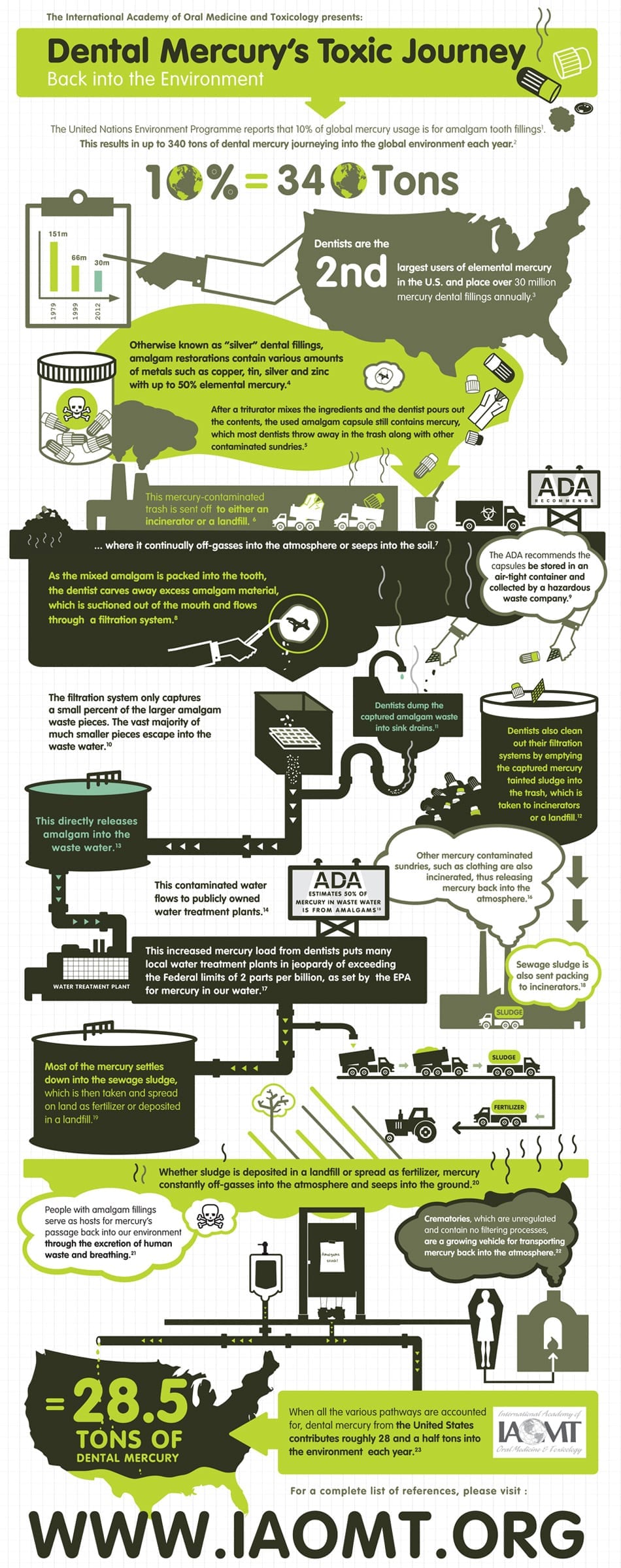Last fall, we cheered the EPA’s proposed amalgam separator rule. The ADA’s response, on the other hand, was weirdly guarded. You’d think they’d be all for a rule “based largely,” they said, “on the Association’s best management practices, including the use of amalgam separators.” Heck, they even “consulted with the EPA as it developed the rule.”
Five months later, they’ve decided they don’t like that rule. Too much “ambiguity,” they say. Too many “inconsistencies.” Mostly, though, it seems they think it’s just too much of a burden on dentists.
Besides, they insist in their latest press release, the dental industry barely contributes to mercury pollution at all! “Very little – less than 1% – of the mercury released into the environment comes from dentistry,” they say.
The reality? EPA estimates show that “mercury from dental offices contributes significantly to the overall mercury contamination in wastewater,” releasing more than 3.5 tons of mercury into public water systems each year. Fifty percent of all mercury pollution in the water supply comes from dental offices.
We contacted the ADA about this discrepancy. So far, their response has been
If we do get an answer, we’ll let you know.
Meantime, our best guess is that the organization is choosing only to count mercury that still makes it into the environment after water treatment. This, of course, completely sidesteps the issue of mercury amalgam’s journey to water treatment. It neglects the fate of the 78% of mercury amalgam they claim is “captured by chairside traps and vacuum filters” – or where the other 22% goes.
Above all, it fails to consider all the other points in amalgam’s “life cycle” during which mercury contamination can happen – contamination that would not happen if there were no market for dental amalgam.

Not that the ADA is alone in wanting to maintain the status quo.
Prompted by a lawsuit filed by the IAOMT and allied organizations, the FDA finally responded to three petitions urging the need to rid dentistry of mercury. Apparently, since the agency felt that the new mercury research the groups submitted didn’t really add anything new to previous petitions, their mercury-is-safe position can’t be wrong now because it wasn’t wrong then.
Or, to paraphrase the title of one report on the situation, “We stand by our previous mistake.”
Even so, the agency did “partially grant” some website changes requested by Citizens for Health. Most notably, they agreed to clarify that, despite their name, “silver” fillings actually contain elemental mercury and that mercury is their main component. This at least addresses the issue raised by Zogby research last August: “silver fillings” is an incredibly misleading term that effectively erodes a patient’s right to informed consent.
And there’s been another big change at the agency that may bode well (at least better) for bringing the FDA in line with growing world consensus on the need for mercury-free dentistry: Commissioner Margaret Hamburg has announced her resignation. With ties to the country’s largest distributor of amalgam, Hamburg’s overview of the amalgam rule process was tainted from the start with conflicts of interest. One leading potential successor, on the other hand, has done research on medical conflict-of-interest issues, which lends a glimmer of hope that, if appointed, he might be a little more tuned into the problems that Hamburg didn’t seem to think were problems at all.
And there’s more good news – the US Supreme Court recently took the North Carolina dental board to task for attempting to regulate who can professionally whiten teeth. Board members, noted the Court, aren’t regulators in the public interest but actors with a special interest and profits to gain or lose. With respect to tooth whitening, they were trying to eliminate competition.
What does this have to do with mercury? We’ll let Charlie Brown of Consumers for Dental Choice tell it, as he did in a recent email:
For years, dental boards composed of pro-mercury dentists tried to silence their amalgam-free dentist competitors, who were blowing the whistle on a dirty industry secret: amalgam fillings are 50% mercury. Who are these dental board members? The great majority are pre-screened by the American Dental Association’s state chapters, who hand a list of dental board candidates to pliant governors. In some states, the governor must pick from this list. With state dental associations and dental boards holding virtually identical interests, these boards are not protecting consumers. No, they are openly advancing the agenda of the pro-mercury state dental association that got them appointed….
The many dentists who stood up to dental boards over the years are vindicated today – and so is Consumers for Dental Choice with our 20-year battle against state dental boards. From the start, we charged dental boards with acting illegally when they tried to silence their mercury-free dentist competitors with a gag rule prohibiting them from discussing mercury with patients. Thanks to the First Amendment, we made sure that dentists today can speak out for mercury-free dentistry.
And we will continue to do so. Mercury-free dentistry is good dental medicine – for patients and dental workers and the planet. It’s sound science. It’s common sense. It’s the right thing to do.